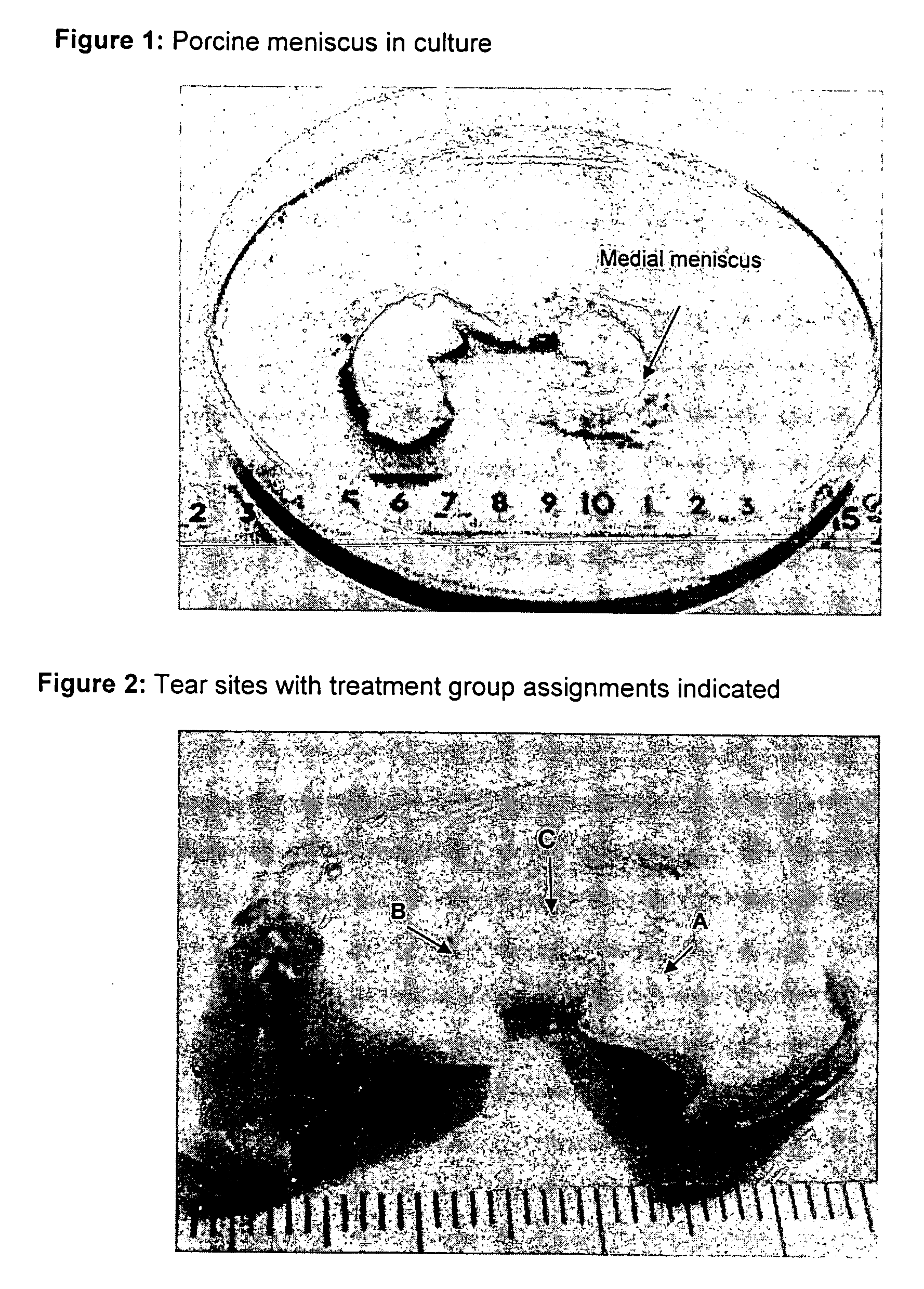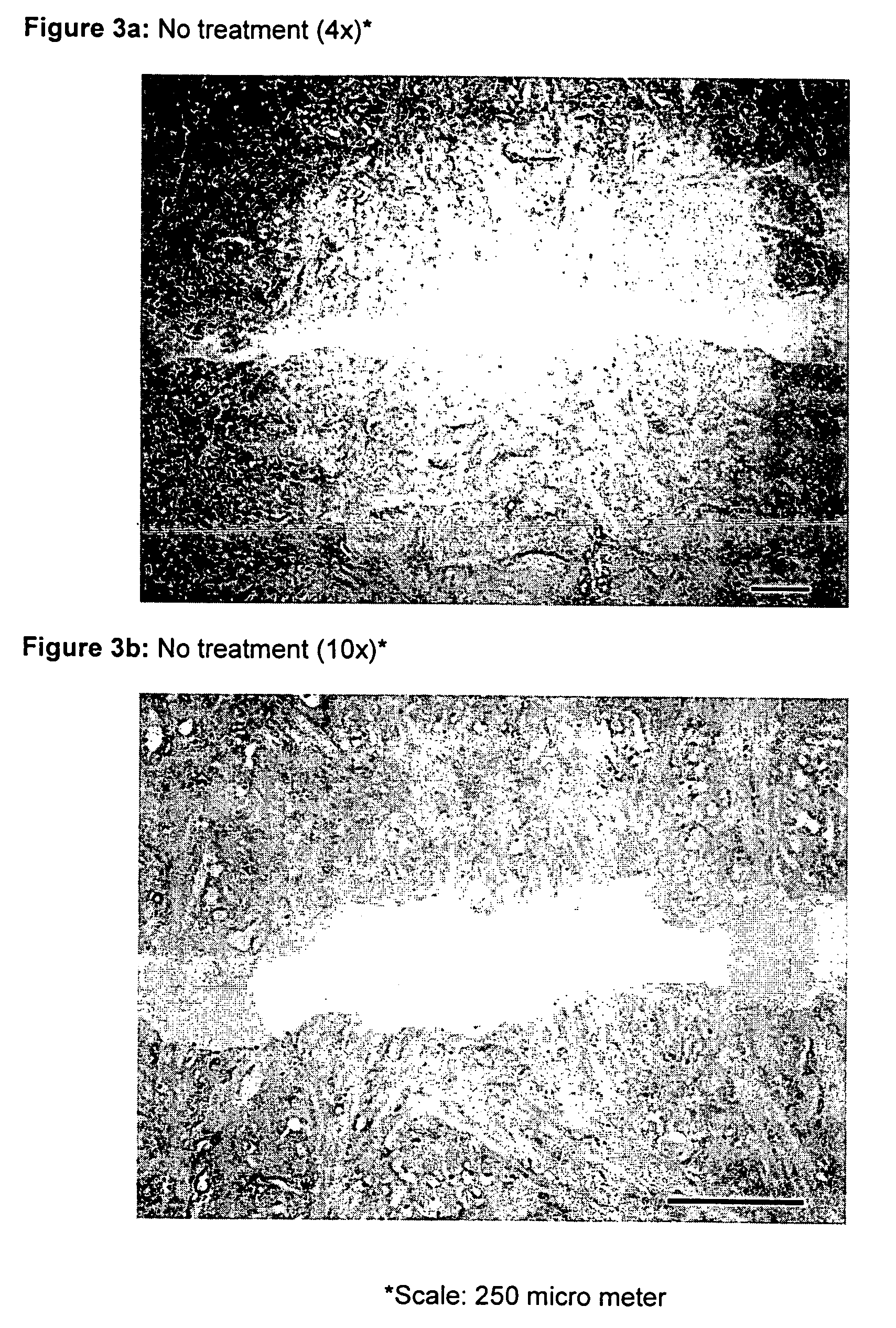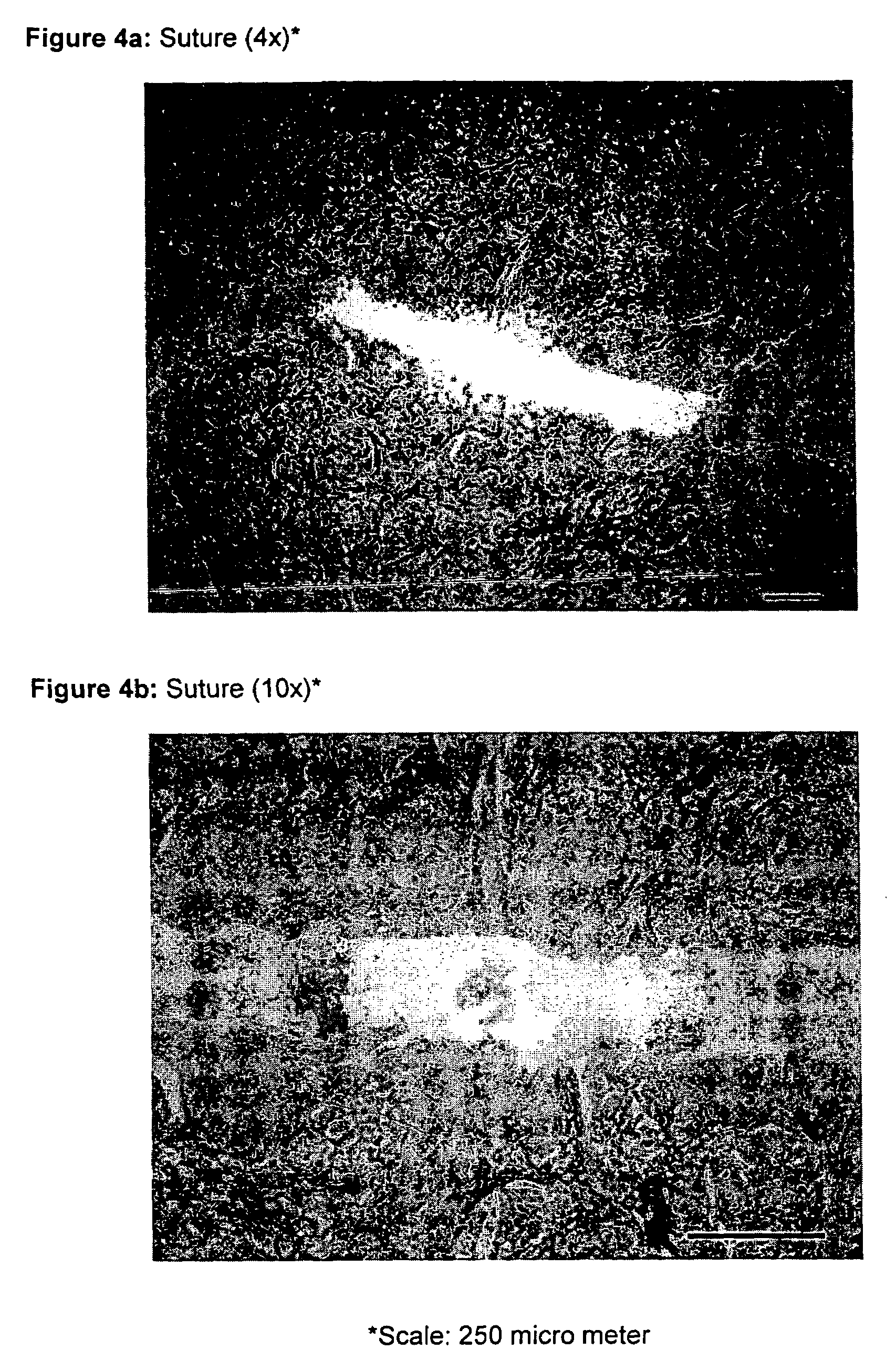Method for treatment and repair of meniscal injuries
a meniscus and joint injury technology, applied in the field of meniscus joint injury repair, can solve the problems of limited use of this approach, accelerated cartilage degeneration, and degenerative changes, and achieve the effects of enhancing the adhesion function of collagen-peg hydrogel and promoting cross-linking
- Summary
- Abstract
- Description
- Claims
- Application Information
AI Technical Summary
Benefits of technology
Problems solved by technology
Method used
Image
Examples
Embodiment Construction
[0031]The current invention is based on findings that when a meniscal lesion, tear or another injury is treated with an adhesive composition comprising collagen-PEG hydrogel alone or in combination with other regeneration promoting components or accelerants, the meniscal tear may be advantageously healed without major invasive surgical procedure.
[0032]This invention, therefore, relates to a method for repair of meniscal lesions, tears and injuries. The invention utilizes approach of a minimally invasive procedure comprising induction of meniscal regeneration by introducing a strongly adhesive collagen-polyethylene glycol (PEG) hydrogel directly to a site of injury. The collagen-PEG hydrogels of the invention strongly bind the torn region of the meniscus for a period of time long enough needed for healing. They also promote cell migration and extracellular matrix formation in the torn zone.
[0033]More specifically, the invention concerns identification of adhesive hydrogel mixtures su...
PUM
| Property | Measurement | Unit |
|---|---|---|
| diameter | aaaaa | aaaaa |
| length | aaaaa | aaaaa |
| thick | aaaaa | aaaaa |
Abstract
Description
Claims
Application Information
 Login to View More
Login to View More - R&D
- Intellectual Property
- Life Sciences
- Materials
- Tech Scout
- Unparalleled Data Quality
- Higher Quality Content
- 60% Fewer Hallucinations
Browse by: Latest US Patents, China's latest patents, Technical Efficacy Thesaurus, Application Domain, Technology Topic, Popular Technical Reports.
© 2025 PatSnap. All rights reserved.Legal|Privacy policy|Modern Slavery Act Transparency Statement|Sitemap|About US| Contact US: help@patsnap.com



